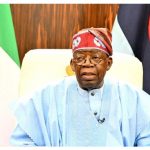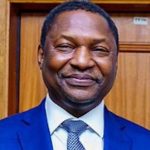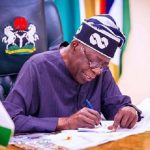World
Anti-abortion Policy Could Save Russia’s Population
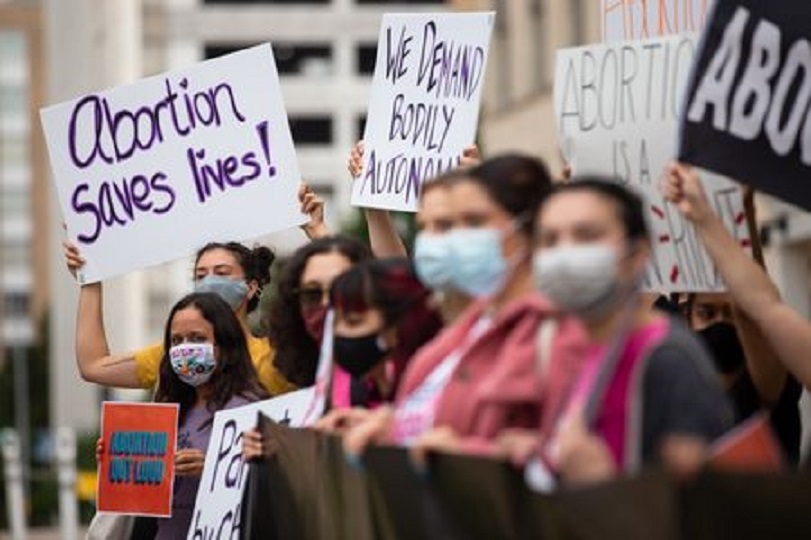
By Kestér Kenn Klomegâh
Russia, the largest country in the world by area, has a population of 147.2 million, according to the population census.
In the 2021 census, it was said that roughly 81% of the population were ethnic Russians, and 19% of the population were ethnic minorities. Demographers say Russia has become increasingly reliant on immigration to maintain its population. Russia’s population is increasingly decreasing since the start of its invasion of neighbouring Ukraine in late February 2022.
The demographic crisis has deepened primarily due to high military fatalities while simultaneously facing renewed brain drain and human capital flight caused by Western mass sanctions imposed on the country. In March 2023, The Economist reported that “Over the past three years the country has lost around 2 million more people than it would ordinarily have done, as a result of the war in Ukraine, and streaming exodus.”
Despite amazing potential conditions available in this huge territory, Russia has been experiencing oscillating patterns of population since the collapse of the Soviet era. After the Soviet break up, Russia has witnessed ‘back and forth’ with its demographic situation, even state policies that were adopted could not support an increased population over the years.
Russia is considered a religious country, and yet abortion rates are high. Understandably, abortion is legal and, therefore, it has had a negative impact on population growth. The economic situation has not encouraged families to have beyond a child, thus it is more or less a one-child policy. Now, Russia’s war with Ukraine is taking a heavy toll on the population too. There are claims of hundreds of thousands of male soldiers already killed at the war-front, as a result, has created single families in the country.
Official Russian Statistics
Demography figures could be staggering. But in August 2023, the Federal State Statistics Service (Rosstat) said the natural population in Russia slowed by 29% in January-June 2023 compared with the same period of 2022, to 272,500 from 383,800.
The number of births fell 3% to 616,200 from 635,200 and the number of deaths 12.8% to 888,700 from 1,019,000. Natural population decrease in 2022 was down 42.5% in comparison with 2021, to 599,616 from 1,042,675.
As a result, by the beginning of 2023 Russia’s population excluding official statistics for the Donetsk People’s Republic, the Lugansk People’s Republic, and the Zaporizhzhia and Kherson regions, had fallen to 146.4 million, from 147 million at the start of 2022.
In addition, Russia’s Federal State Statistics Service said on November 10 that 1,305,513 persons died over nine months of 2023, and concretely 507,131 divorces were registered this year. According to statistics, the total number of unemployed in Russia in September amounted to 2.3 mln people. These figures were also reported by the state media, Tass News Agency.
Russia’s Federal Migration Service (FMS) has its narratives on trends of immigrants, especially young Russians escaping military mobilization, and well-talented specialists and professionals looking for greener pastures abroad. These specialists and professionals are highly dissatisfied with the current political situation in the country, and consistently exiting to Europe and the United States.
What are the pathways out of this dilemma?
Patriarch Kirill, of Moscow and All of Russia, in Sept. 2023 signed an open public petition for the adoption of an anti-abortion law in the Russian Federation. The text of the petition has been discussed and agreed with the Patriarchal Commission for Family Matters and the Protection of Motherhood and Childhood.
Its authors stand against abortions, which they describe as a legal murder of unborn children. They demand amendments to the legislation and recognition of a conceived embryo to be a human creature whose life, health and well-being should be protected by law.
The petition’s authors come categorically against any surgical or medical-induced termination of pregnancy. They believe that pregnant women and families with children should receive material aid, the size of which should not be below the minimal subsistence level, from the state budget.
By mid-August, the activists from the Pro-Life all-Russia social movement had gathered the one-millionth signature in support of the legal ban on abortion. The Patriarch said that the Church considers abortion to be a sin and its position is to support the growth of the population.
Now in November 2023, Patriarch Kirill of Moscow and All Russia finally and strictly demanded that induced terminations of pregnancies be removed from services provided by private and public clinics, healthcare institutions and hospitals throughout the Russian Federation. The head of the Russian church also added that a resolute revision of demographic policy is a strong condition for the survival of modern Russia.
Demography and its Implications for Russia’s economy
It is often said that Russia lacks a sufficient number of migrants to fulfil its ambitious development plans. Despite various official efforts, including regular payment of maternal capital to stimulate birth rates and regulating migration policy to boost population, Russia is reportedly experiencing a decreasing population. In the past, government efforts to re-populate the Far East also proved futile, incapable of producing any useful results in the Far East. Seemingly, most economic projects have shifted to Chinese who are actively undertaking production there in the region. The Far East region is a colossal region with a small population but huge untapped economic potential and attracting the Chinese.
According to analysts interviewed for this article pointed out that Moscow has remained unfriendly towards foreign immigrants, especially those from the former Soviet republics. Nevertheless, the analysts suggested that these huge human resources could be used in the vast agricultural fields to boost domestic agricultural production. On the contrary, the Federal Migration Service has deported these illegal migrants from Russia. Due to short-sightedness, Russian authorities simply don’t see the need to legalize them, or facilitate steps to obtain legal documents.
The government can ensure that steady improvements are consistently made with the strategy of legalizing (regulating legal status) and redeploying the available foreign labour, the majority from the former Soviet republics rather than deporting back to their countries of origin. There are an estimated four million undocumented immigrants from the ex-Soviet states in Russia.
Russian analysts told me during several interviews that Russia has encouraged or even forced people in occupied or annexed regions to become Russian citizens, a procedure known as passportization. This includes the Donetsk, Kherson, Luhansk and Zaporizhzhia oblasts of Ukraine, and South Ossetia and Abkhazia in Georgia. But these would not help Russia’s population to any large degree. Rather, the country needs an immigration policy plus other topmost population support measures.
On the other hand and for the past few years, Moscow Mayor Sergei Sobyanin has also been credited for transforming the city into a very neat and smart modern one, thanks partly to foreign labour – an invaluable reliable asset – performing excellently in maintaining cleanliness and on the large-scale construction sites, and so also in various micro-regions on the edge or outskirts of Moscow.
It is, however, necessary to recall here that President Vladimir Putin has already approved a list of instructions aimed at reforming the migration requirements and the institution of citizenship in Russia based on the proposals drafted by the working group for implementation of the State Migration Policy Concept of the Russian Federation for 2019-2025.
“Within the framework of the working group for implementation of the State Migration Policy Concept of the Russian Federation for 2019-2025, the Presidential Executive Office of the Russian Federation shall organize work aimed at reforming the migration requirements and the institution of citizenship of the Russian Federation,” an official statement posted to Kremlin website.
In addition, the president ordered the Government, the Interior and Foreign Ministries, the Federal Security Service (FSB), and the Justice Ministry alongside the Presidential Executive Office to make amendments to the plan of action for 2019-2021, aimed at implementing the State Migration Policy Concept of the Russian Federation for 2019-2025.
World
Comviva Wins at IBSi Global FinTech Innovation Award
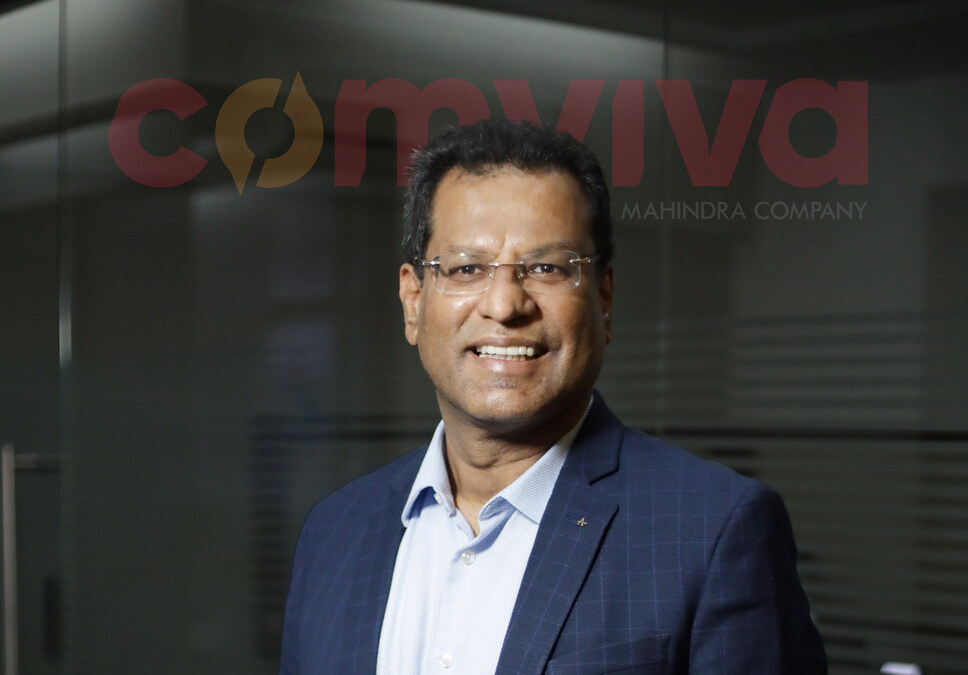
By Modupe Gbadeyanka
For transforming cross-border payments through its deployment with Global Money Exchange, Comviva has been named Best In-Class Cross Border Payments.
The global leader in digital transformation solutions clinched this latest accolade at the IBS Intelligence Global FinTech Innovation Award 2025.
The recognition highlights how Comviva’s mobiquity Pay is helping shape a modern cross-border payment ecosystem that stretches far beyond conventional remittance services.
Deployed as a white label Wallet Platform and launched as Global Pay Oman App, it fulfils GMEC’s dual vision—positioning itself as an innovative payment service provider while digitally extending its core money transfer business.
The solution allows GMEC to offer international money transfers alongside seamless forex ordering and other services. These capabilities sit alongside a broad suite of everyday financial services, including bill and utility payments, merchant transactions, education-related payments, and other digital conveniences — all delivered through one unified experience.
“This award is a testament to Oman’s accelerating digital transformation and our commitment to reshaping how cross-border payments serve people and businesses across the Sultanate.
“By partnering with Comviva and bringing the Global Pay Oman Super App, we have moved beyond traditional remittance services to create a truly inclusive and future-ready financial ecosystem.
“This innovation is not only enhancing convenience and transparency for our customers but is also supporting Oman’s broader vision of building a digitally empowered economy,” the Managing Director at Global Money Exchange, Subromoniyan K.S, said.
Also commenting, the chief executive of Comviva, Mr Rajesh Chandiramani, said, “Cross-border payments are becoming a daily necessity, not a niche service, particularly for migrant and trade-linked economies.
“This recognition from IBS Intelligence validates our focus on building payment platforms that combine global reach with local relevance, operational resilience and a strong user experience. The deployment with Global Money Exchange Co. demonstrates how mobiquity® Pay enables financial institutions to move beyond remittances and deliver integrated digital services at scale.”
“The deployment of mobiquity Pay for GMEC showcases how scalable, API-driven digital wallet platforms can transform cross-border payments into seamless, value-rich experiences.
“By integrating remittances, bill payments, forex services, and AI-powered engagement into a unified Super App, Comviva has reimagined customer journeys and operational agility.
“This Best-in-Class Cross-border Payments award win stands as a testament to Comviva’s excellence in enabling financial institutions to compete and grow in a digitally convergent world,” the Director for Research and Digital Properties at IBS Intelligence, Nikhil Gokhale, said.
World
Russia Renews Africa’s Strategic Action Plan
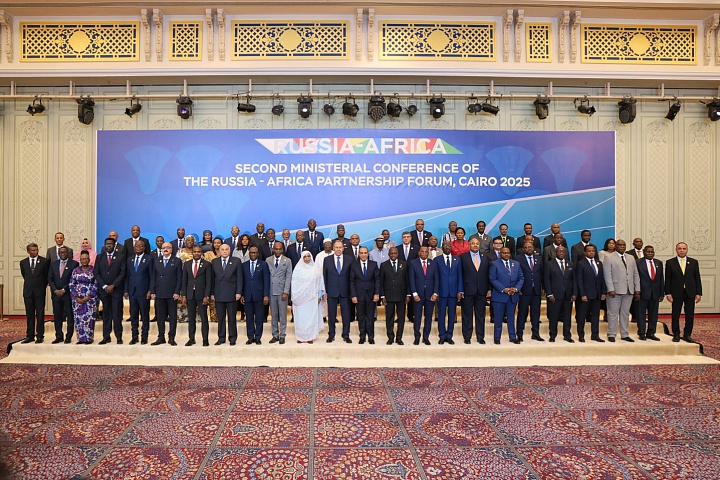
By Kestér Kenn Klomegâh
At the end of an extensive consultation with African foreign ministers, Russian Foreign Minister, Sergey Lavrov, has emphasized that Moscow would advance its economic engagement across Africa, admittedly outlining obstacles delaying the prompt implementation of several initiatives set forth in Strategic Action Plan (2023-2026) approved in St. Petersburg during the Russia-Africa Summit.
The second Ministerial Conference, by the Russian Foreign Ministry with support from Roscongress Foundation and the Arab Republic of Egypt, marked an important milestone towards raising bilateral investment and economic cooperation.
In Cairo, the capital city of the Arab Republic of Egypt, Lavrov read out the final resolution script, in a full-packed conference hall, and voiced strong confidence that Moscow would achieve its strategic economic goals with Africa, with support from the African Union (AU) and other Regional Economic blocs in the subsequent years. Despite the complexities posed by the Russia-Ukraine crisis, combined with geopolitical conditions inside the African continent, Moscow however reiterated its position to take serious steps in finding pragmatic prospects for mutual cooperation and improve multifaceted relations with Africa, distinctively in the different sectors: in trade, economic and investment spheres, education and culture, humanitarian and other promising areas.
The main event was the plenary session co-chaired by Russian Foreign Minister Sergey Lavrov and Egyptian Minister of Foreign Affairs, Emigration, and Egyptians Abroad Bashar Abdelathi. Welcome messages from Russian President Vladimir Putin and Egyptian President Abdelhak Sisi were read.
And broadly, the meeting participants compared notes on the most pressing issues on the international and Russian-African agendas, with a focus on the full implementation of the Russia-Africa Partnership Forum Action Plan for 2023-2026, approved at the second Russia-Africa Summit in St. Petersburg in 2023.
In addition, on the sidelines of the conference, Lavrov held talks with his African counterparts, and a number of bilateral documents were signed. A thematic event was held with the participation of Russian and African relevant agencies and organizations, aimed at unlocking the potential of trilateral Russia-Egypt-Africa cooperation in trade, economic, and educational spheres.
With changing times, Africa is rapidly becoming one of the key centers of a multipolar world order. It is experiencing a second awakening. Following their long-ago political independence, African countries are increasingly insisting on respect for their sovereignty and their right to independently manage their resources and destiny. Based on these conditions, it was concluded that Moscow begins an effective and comprehensive work on preparing a new three-year Cooperation and Joint Action Plan between Russia and Africa.
Moreover, these important areas of joint practical work are already detailed in the Joint Statement, which was unanimously approved and will serve as an important guideline for future work. According to reports, the Joint Statement reflects the progress of discussions on international and regional issues, as well as matters of global significance.
Following the conference, the Joint Statement adopted reflects shared approaches to addressing challenges and a mutual commitment to strengthening multifaceted cooperation with a view to ensuring high-quality preparation for the third Russia-Africa Summit in 2026.
On December 19-20, the Second Ministerial Conference of the Russia-Africa Partnership Forum was held in Cairo, Egypt. It was held for the first time on the African continent, attended by heads and representatives of the foreign policy ministries of 52 African states and the executive bodies of eight regional integration associations.
World
TikTok Signs Deal to Avoid US Ban

By Adedapo Adesanya
Social media platform, TikTok’s Chinese owner ByteDance has signed binding agreements with United States and global investors to operate its business in America.
Half of the joint venture will be owned by a group of investors, including Oracle, Silver Lake and the Emirati investment firm MGX, according to a memo sent by chief executive, Mr Shou Zi Chew.
The deal, which is set to close on January 22, 2026 would end years of efforts by the US government to force ByteDance to sell its US operations over national security concerns.
It is in line with a deal unveiled in September, when US President Donald Trump delayed the enforcement of a law that would ban the app unless it was sold.
In the memo, TikTok said the deal will enable “over 170 million Americans to continue discovering a world of endless possibilities as part of a vital global community”.
Under the agreement, ByteDance will retain 19.9 per cent of the business, while Oracle, Silver Lake and Abu Dhabi-based MGX will hold 15 per cent each.
Another 30.1 per cent will be held by affiliates of existing ByteDance investors, according to the memo.
The White House previously said that Oracle, which was co-founded by President Trump’s supporter Larry Ellison, will license TikTok’s recommendation algorithm as part of the deal.
The deal comes after a series of delays.
Business Post reported in April 2024 that the administration of President Joe Biden passed a law to ban the app over national security concerns, unless it was sold.
The law was set to go into effect on January 20, 2025 but was pushed back multiple times by President Trump, while his administration worked out a deal to transfer ownership.
President Trump said in September that he had spoken on the phone to China’s President Xi Jinping, who he said had given the deal the go ahead.
The platform’s future remained unclear after the leaders met face to face in October.
The app’s fate was clouded by ongoing tensions between the two nations on trade and other matters.
-

 Feature/OPED6 years ago
Feature/OPED6 years agoDavos was Different this year
-
Travel/Tourism9 years ago
Lagos Seals Western Lodge Hotel In Ikorodu
-

 Showbiz3 years ago
Showbiz3 years agoEstranged Lover Releases Videos of Empress Njamah Bathing
-

 Banking8 years ago
Banking8 years agoSort Codes of GTBank Branches in Nigeria
-

 Economy3 years ago
Economy3 years agoSubsidy Removal: CNG at N130 Per Litre Cheaper Than Petrol—IPMAN
-

 Banking3 years ago
Banking3 years agoFirst Bank Announces Planned Downtime
-

 Banking3 years ago
Banking3 years agoSort Codes of UBA Branches in Nigeria
-

 Sports3 years ago
Sports3 years agoHighest Paid Nigerian Footballer – How Much Do Nigerian Footballers Earn




